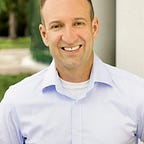Procedures, Policies, PowerPoints and People
The past few weeks we have been highlighting some of our student success stories and exploring aspects of our educational program that we think have contributed to the success. This week I want to spend some time appreciating the most important factor in our student success; the people who work at Design Tech.
Procedures, policies, and PowerPoints are all meaningless compared to the people who work in a school. This is true at Design Tech, and it’s true in every school. As one Design Tech student famously told her classmates, “you don’t go to school; you are the school.” The same holds true for our staff, “You don’t work at a school, you are the school.” So it’s in that context that I want to share something we’ve been talking about as a staff.
First we have to acknowledge that what we are doing is really hard. Not only did the pandemic force us to change just about all aspects of our lives, both personally and professionally, but we have also been during the internal work needed to realize our values of liberation, community, and rebellion. Adapting to a pandemic and decolonizing ourselves are no small tasks, so if there have been moments when we’ve felt tired, that’s understandable. As we move toward the end of 2021, we will all have an opportunity to reset and recharge, and here are some thoughts on that.
1. The “yes and” mentality is great for brainstorming, but it is not a great lifestyle.
As a design thinking school we embrace the idea of “yes and.” This generative mindset helps us develop creative solutions and leads to some great innovations, the problem is it can also lead to unsustainable behaviors. The problem created by a “yes and” mindset is that we often find a great way to do something and then add it onto whatever else we are already doing. If you find a new way to do something and that new strategy takes you two hours, then find something else that you are spending two hours on and stop doing it. Teachers cannot sustain themselves if they just keep stacking tasks on top of one another.
2. Not working is not the same as resting.
If you’ve ever done a workout where you are supposed to go very hard for 4–5 minutes and then rest for 1 minute you know how quickly that one minute can pass and next thing you know you are right back on the treadmill not rested at all. In the case of the workout, you need to plan ahead to rest. This means moving your water bottle close to you, setting the music up and doing anything else that you need to do to make sure that when you rest, you really rest. The resting part has to be intentional; it is counterintuitive, but resting takes some design; rest does not just happen. This principle applies in other contexts. If you need to rest for an hour, make sure you do it with intention. You can easily spend an hour not working and then return to your work not rested. There may not be a right or a wrong way to rest, but you should be mindful of the need to rest and pay attention to how you are spending your rest time. (One strategy that we used recently was to kick off our professional development with some intentional rest — see picture above).
3. Eliminate the word “just” from your vocabulary
The word “just” diminishes yourself. Never say I just walked for 15 minutes, you walked 15 minutes — own it. We all know that ‘comparison is the thief of joy’, but it’s important to not only avoid comparing yourself to others, but to also avoid comparing yourself to some external standard of perfection. It is very easy to envision the perfect lesson, the perfect feedback, and so on. But know that the work of an educator does not have natural boundaries. We don’t have a deal to close or a number to hit. We can always give more feedback, refine our lesson, or get to know our students better. We can always look to improve our practice, but we cannot use an external standard of perfection as our measuring stick. We can only do the best that we can each time.
As we move through the year, we will keep examining student success stories while looking at our educational program, but as we do this, we know that it’s the people behind the program that contribute the most to our student’s success.
